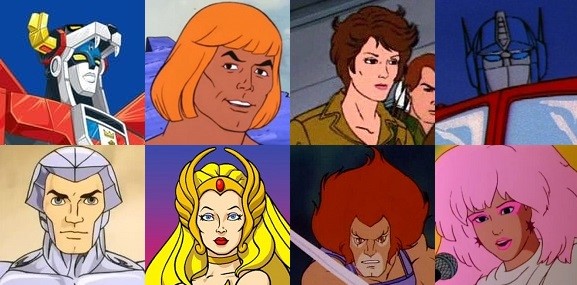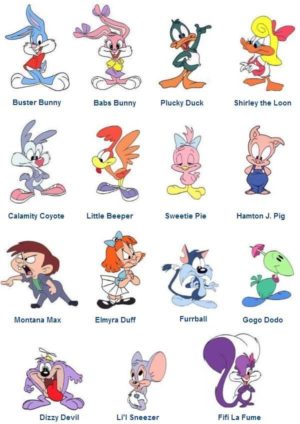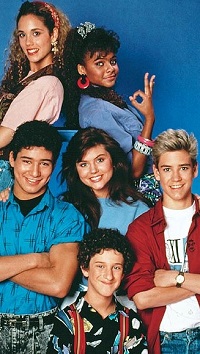
The institution of Saturday morning cartoons ended in 2014 and as I have briefly touched on in previous columns, there were a number of factors that contributed to that.
The earliest seeds were planted in the 1980s with explosions in three areas — cable, home video, and syndication. Technically, Nickelodeon launched in 1977, but at that time, cable wasn’t as widespread. But more and more homes got cable (or satellite) by the early ’80s and kids had their own network right from the start. The Disney Channel launched in 1983, and kids had even more options. Both networks were completely targeted at kids or families and offered programming nearly all day long. They were joined by the Cartoon Network in 1992.
Over the years, all three added sister networks. In addition to the main Nickelodeon channel, there is also Nicktoons, Nick Jr., TeenNick, NickRewind, NickMusic, and TV Land. The Disney Channel spawned Disney Junior, Disney XD, and the now-defunct Toon Disney. As Cartoon Network focused more and more on new original shows, it spun off the retro-themed Boomerang to feature the Turner library of classic ‘toons, which includes Looney Tunes, Hanna-Barbera, and Ruby/Spears Productions.
On top of these, other cable channels that weren’t expressly dedicated to children also offered some cartoons and other kids programming at times. USA aired the USA Cartoon Express block on weekday afternoons and weekend mornings. Other kids’ programming aired on the Family Channel (later ABC Family, now Freeform), and other outlets.
With so many kids’ programming offered at almost anytime, Saturday morning started losing its uniqueness.
In addition to cable, VCRs became household items in the ’80s, allowing owners to record whatever they wanted and watch it at any time. They could also buy or rent videotapes of nearly everything and once again, watch it at their convenience. They didn’t need to wait for one special day. Nowadays, with streaming, that’s truer than ever.

One factor that most people don’t think about when it comes to the end of Saturday morning cartoons is syndication. In the early ’80s, children’s television was deregulated, making it okay for cartoons to be used to promote toys and other merchandise. The first original animated show to take advantage of this was Filmation’s He-Man and the Masters of the Universe, which debuted in 1983. Both the cartoon and the Mattel toy line were massive successes and generated millions of dollars in sales of various licensed items and spawned a theatrical animated movie, a live-action movie, and even a live tour show.
Also premiering in 1983 was G.I. Joe: A Real American Hero, created by Sunbow Productions and Marvel Productions, which promoted a toy line from Hasbro. This was also a massive success, and the floodgates were opened for Transformers, Go-Bots, Thundercats, Silverhawks, Voltron, She-Ra: Princess of Power, Jem, Rainbow Brite, My Little Pony, Robotech, C.O.P.S., M.A.S.K., and more. A few syndicated shows like The Real Ghostbusters and Teenage Mutant Ninja Turtles also aired on Saturday mornings on networks.

Parents didn’t care for these shows in general, because most of them were violent and they didn’t like the fact that they were basically 30-minute toy commercials. But these shows were massive successes nonetheless.
But toward the end of the decade, there was a revolution in syndicated animation with Disney’s Duck Tales, a series that was not made to sell toys and was praised for its high quality, winning an Emmy Award among other honors. The success of Duck Tales led to the creation of other successful shows including Chip & Dale’s Rescue Rangers, and Tailspin, and then a flood of additional original Disney cartoons made for television in syndication, on networks, and on the Disney Channel.

In 1990, Warner Brothers also opted to create a new, high-quality show for syndication — Tiny Toon Adventures. That was followed by Animaniacs. Both of those were so successful they spawned various spin-offs. Tiny Toon Adventures won seven Emmys and Animaniacs won two Emmys and a Peabody Award. Like Disney, Warner Brothers became committed to high-quality animation for the small screen, leading to, among other things, Batman: The Animated Series, and essentially the entire Cartoon Network lineup.
How did all of these shows lead to the end of Saturday morning cartoons? Well, like the shows on cable, they aired on weekday afternoons and mornings, making the Saturday shows less special. In fact, if you look at the Saturday ‘toons of that time period, a lot of them simply weren’t as good. They weren’t as exciting as the toy cartoons, nor were many of them as of high quality as Duck Tales, Tiny Toon Adventures, etc.
Folks who grew up in the ’80s have much stronger memories and greater affection for Masters of the Universe, G.I. Joe, and Teenage Mutant Ninja Turtles versus Flintstone Kids, Snorks, or Foofur. Part of that is because the toy-‘toons were more than shows, they were lifestyles with kids playing with the toys, wearing the pajamas, and carrying the lunchboxes.
And with these shows airing on weekday afternoons, they were more ubiquitous and there were simply more episodes. Saturday morning shows usually had 13 episodes per season, while syndicated shows averaged 65!
But there were other factors and probably the biggest is good ol’ cash. Cartoons are expensive to make and in the ’80s nearly all of them were being produced overseas, usually Japan or Korea. This made them difficult to produce on top of being expensive, as it was difficult to communicate between the networks and the animation studios. I mentioned the problems that plagued the first season of X-Men, which was riddled with animation mistakes that delayed its premiere. When FOX got back the flawed episodes, they had to send them back overseas to be fixed.
And cartoons and kids programs don’t generate a lot of money from advertising because kids don’t have any money. Anyone that watched or even still watches kids’ shows knows that the only things advertised are toys, video games, cereal, fast food, snacks, and sodas. That’s because that’s the only thing that kids can ask their parents to buy for them.

I mentioned previously that Saved By the Bell was a massive ratings hit, but it was successful financially as well because it appealed to the more desirable teen and young adult audience and more expensive advertising could be sold to companies that produced acne medication, other health and beauty items including makeup, and other pricier products. And on top of that, Saved By the Bell was made in the U.S. so it was cheaper and easier to produce than cartoons.
Then in 1991, NBC signed a deal to broadcast Notre Dame football games on Saturdays. That was a huge score for them because those drew adult males, and they are the goldmine when it comes to advertising — beer, cars, insurance, stocks, appliances, etc. This was a blow to kids of course, as they had already been dealing with their cartoons being pre-empted by sports for years.
On top of that, in the absence of network-dictated programming blocks, a lot of local affiliates have chosen to air infomercials, which are advertisements that companies pay to air.
In the ’90s, the FCC also cracked down on the networks, forcing them to air a certain amount of educational programming each week. That’s why Saturday mornings now consist entirely of documentary-type shows about animals, travel, and cooking.
There are still some cartoons on Saturdays on cable. But the magic is gone. For older fans, MeTV has begun airing classic cartoons on Saturdays, including Tom & Jerry, Popeye, and Looney Tunes.
But that about does it. This wraps up my series dedicated to the history of the tradition of Saturday morning cartoons. If you missed anything, you can find my older columns below:
SATURDAY MORNING SUPERSTARS: THE DAWN OF SATURDAY MORNING CARTOONS
SATURDAY MORNING SUPERSTARS: THE SUPER POWERED SIXTIES
SATURDAY MORNING SUPERSTARS: THE SUNNY ’70S!
SATURDAY MORNING SUPERSTARS: THE SMURFIN’ ADORABLE 1980S
SATURDAY MORNING SUPERSTARS: THE 1990S PART I – WELCOME THE NEW KIDS ON THE BLOCK (NO, NOT THEM!)
SATURDAY MORNING SUPERSTARS: THE ’90S PART 2 – MUTANTS, MORPHERS, AND MORE
SATURDAY MORNING SUPERSTARS: DAWN OF THE NEW MILLENNIUM… AND THE END OF AN ERA
Beginning next week, I will examine specific shows that aired on Saturday mornings in depth. If you have a favorite that you would like to see covered, feel free to comment below.
Thanks for reading and be sure to check back each Saturday for more ‘toon talk!



